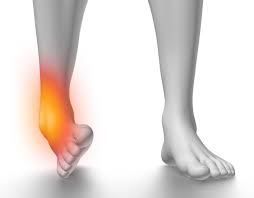Ankle sprains are one of the most common injuries. An ankle sprain occurs when the ankle is rolled or turned past its normal range of limits. This usually happens when the foot is planted awkwardly, twisted on an uneven surface or an unusually high force is applied to the ankle. Ankle sprains are common in sports such as soccer, netball and touch footy, but can also occur in daily activities such as walking or stepping off a curb. During an ankle sprain, the ligaments holding the bones together are ‘overstretched’ or sprained causing an inflammatory reaction and pain. As a result of the swelling and pain, movement at the ankle joint is restricted, muscles such as the calf become tight, and a limp is often noticeable. Ice should be applied to the area immediately after an ankle has been sprained. Rest from painful movements, elevation of the ankle and a compression bandage will also be helpful for the next 48 hours. If an ankle sprain does not heal properly then the joint may become unstable, stiff and may lead to further injury. After an ankle sprain, your physiotherapist can help reduce pain and swelling, restore full movement, strength and proprioception. Once you sprain your ankle and ligaments are damaged, your proprioception (balance) is affected. Proprioception is your body’s ability to sense where a joint is in space. If you have poor ankle proprioception, then your body doesn’t know when your ankle is getting into an overstretched or bad position and then your muscles don’t have the ability to correct your position and prevent re-injury. Poor proprioception is one of the biggest risk factors for re-injuring your ankle. Treatment of an ankle sprain may include soft tissue massage to reduce swelling and tightness within the calf, joint mobilisations to regain full movement at the ankle. Your physio can also provide you with some exercises to strengthen the muscles around your ankle joint as well as some exercises to improve your proprioception. A couple of tips for preventing further re-injury include: Proprioceptive, strength and stretching exercises as shown by your physio Wear shoes with good support Avoid training on uneven surfaces Ensure adequate warm up.

